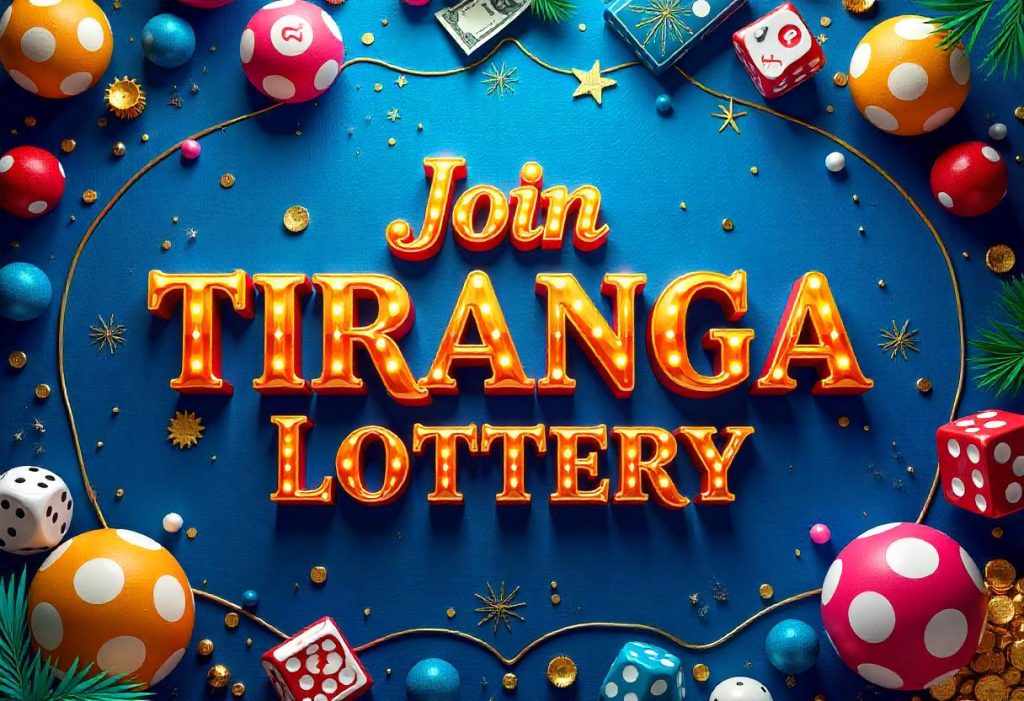
— Introduction
The Tiranga Lottery continues to capture the attention of many within the country’s digital framework, not just for the prospect of unexpected wealth, but for transforming how Indians interface with their finances, technology, and mobility. In the context of a nation’s economic challenges like inflation, volatile employment opportunities, and deepening income inequality, app-based lotteries offer new perspectives into micro-economies that are highly aspirational, risk-seeking, and driven by comfort. In this article, I examine the noteworthy aspects of Tiranga Lottery that contribute to India’s layered informal yet advanced digital economy.
— The Rise of Micro-Wagers in the Digital Age
The prize structure of the Tiranga lottery is an archetype of a larger phenomenon: micro-wagers, the impulsive digital financial bets placed at a minimal scale, are on the rise.
Time Killing Transactions: Many participants, notably busy professionals, buy tickets during moments of low productivity, such as when waiting in a queue for food deliveries, commuting, or waiting to attend appointments. In this context, the ‘investment’ is less monetary and more of cognitive attention.
- Cognitive Biases At Play: Number selection along with subsequent purchases are influenced by anchoring, optimism bias, and the illusion of control.
- Flexible Frequency: Unlike traditional lotteries which have a single drawing each week or month, some platforms have daily or even hourly draws which encourages repeat participation.
- Micro-wagers imitate the patterns noted among typical mobile gamers, albeit with monetary stakes involved.
— Cloaked Informal Fintech
Although it does not identify itself as fintech, the Tiranga Lottery works as a financial service, albeit an informal one, to a number of users.
- Cash Reinvestment: Users tend to reinvest small returns instead of cashing out. This behaviour gives birth to a self-sustaining small economy within the app.
- Winnings Accessibility: Integration with UPI and mobile wallets allows expenses to be paid for instantly. Groceries and mobile top-ups or even rent can be paid for using winnings.
- Effortless Finance: No documentation or future schemes are required, unlike with SIPs or mutual funds. Its finance sans hassle.
In this regard, Tiranga’s focus is not merely a means of diversion. For a subset of users, it acts as an informal digital liquidity provider.
— Local Reach and Global Relevance
The scope of Tiranga Lottery’s expansion is not limited to metros. It is flourishing in tier-2 and tier-3 cities and even in some rural areas.
- Interface Translation: The provision of translations into local languages brings a sense of ease and comfort.
- Regional Aimed Advertising: Names, colors, and even promotional ads are tailored to appeal to specific regions.
- Offline-to-Online Gap Fillers: Some users bring traditional community guessing games and merge them with online lottery ticket purchasing, old meets new form of entertainment.
These modifications have helped the platform capture grassroots acclaim.

— The Growth of the Informal Digital Economy
Volunteers and entrepreneurs are volunteers for drives organized through social media. The rise of Tiranga Lottery platforms of informal digital economic participation is another movement:
- No Need For Employment Verification: Anyone with a smartphone and internet connection can participate—no official ID, credit history or financial profile necessary.
- Technology Apps: While relying on It allows users to navigate various apps including payment portals as well as the games’ and build various forms of digital confidence, some of which can spill over to other fintech or e-commerce activities.
- This is more effective than formal education, and is self-directed as it runs on personal interest.
Re-evaluating Tiranga Lottery also offers rationale to how India’s emerging middle class and low income people interpret financial risk.
- An Opportunity to Enjoy Risk: Many users don’t see the ticket’s value as a financial decision, rather a boost to their mood.
- Full of Triggers and No Safety Nets: Unlike gambling in developed markets, India’s platforms reachable go through periods or lose caps commonly regulated users rarely have access to tools such as cool-off’s or loss caps.
These points raise big contradictions with possible engagement people should care to rational maximize protection.
— Conclusion
The Tiranga Lottery serves as a reminder that lucky draws can have more significance than meets the eye. In scope, it reveals how people’s use of technology is changing the informal sectors of risk, economy, and culture in India. While thinking of ways to make fintech more inclusive, policymakers and technologists may be surprised by the lessons mass adoption of Tiranga teaches.
The Tiranga Lottery in all its forms is an apex of participatory culture, and for a country where the financing system feels intangible, the lottery’s strongest appeal is less about the jackpot, and more about the sense of community it fosters.
For more interesting stories check out: DG Club: Digital Escape Rooted in Simplicity and Strategy
| Popularity of Daman Games in the World of Online Gaming






1 thought on “Tiranga Lottery: Understanding India’s Digital Micro-Economy”